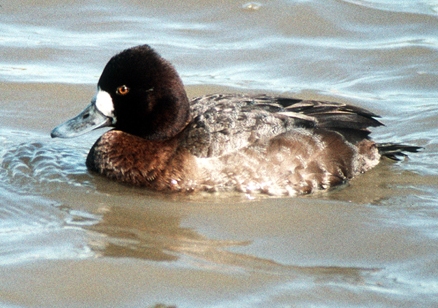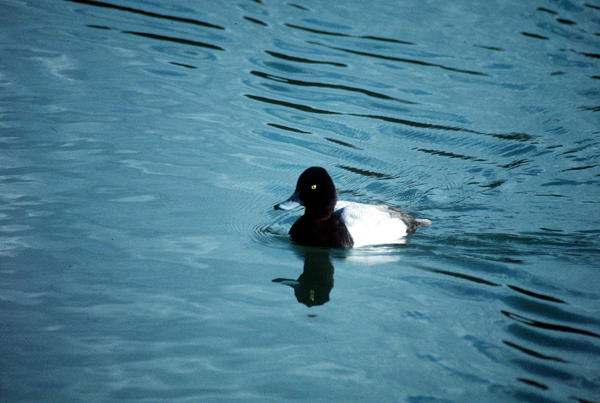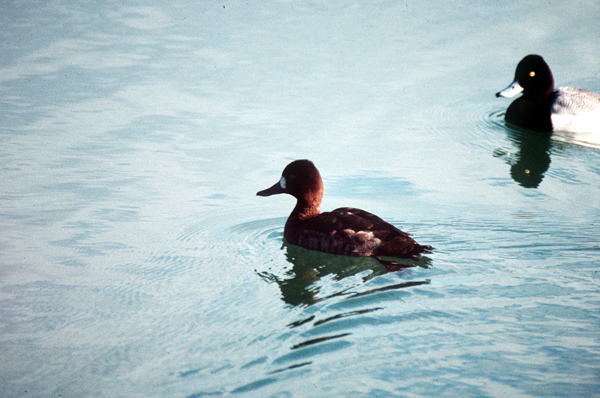|
Lesser Scaup Aythya affinis Pato Pechiblanco, |
 |
|
Female - Photo: G. Beaton
|
|
IDENTIFICATION: A diving duck with an iridescent purple head, dark breast, and gray body. The female has a brown body, with a white patch at the base of the bill. A white line is evident along the trailing edge of the wing in flight. Length: 38-48 cm.; weight: 800-850 g. VOICE: Generally silent on winter grounds. The only sound most people ever hear this species make is the noise the wings make as the bird takes off. Audio (M. Oberle). HABITAT: Spends the winter on freshwater ponds and marshes and protected saltwater bays. There is at least one observation in Puerto Rico with an American Wigeon in shallow coastal waters. HABITS: Dives for crustaceans, molluscs, and aquatic insects. Pairs start to form before the Scaup migrates northward in April and May. The female builds a nest on the ground near a marsh or pond. She lays 9-12 eggs and incubates them for 21-28 days. The male abandons the female when incubation begins. The young leave the nest within a day after hatching, and several females’ broods sometimes gather together into a flock of chicks (creche). Young start to fly at about 45-50 days after hatching. STATUS AND CONSERVATION: An uncommon, localized winter visitor. Lesser Scaup banded as far away as New York State, and Alberta, Canada, have been recovered in Puerto Rico. In the late 1990s, many populations of North American ducks had increased, due to favorable, wet weather conditions on the breeding grounds, but populations did not improve for either species of scaup, with combined numbers about 36 percent below the long-term average. In 1998 both scaup species reached their lowest population levels since North American population surveys began in 1955. On average, 340,000 Lesser Scaup are shot by hunters each year in North America. RANGE: Breeds from central Alaska east to Quebec, and south through the northern Great Plains and northern Rocky Mountains. It winters from southwestern Canada and the northeastern USA, south through Central America, the Bahamas and Greater Antilles. Regular at the Humacao and Caño Tiburones Nature Reserves. TAXONOMY: ANSERIFORMES; ANATIDAE; Anatinae |
|
 |
|
Males - Photo: G. Beaton
|
 |
|
|
Male - Photo: G. Beaton
|
